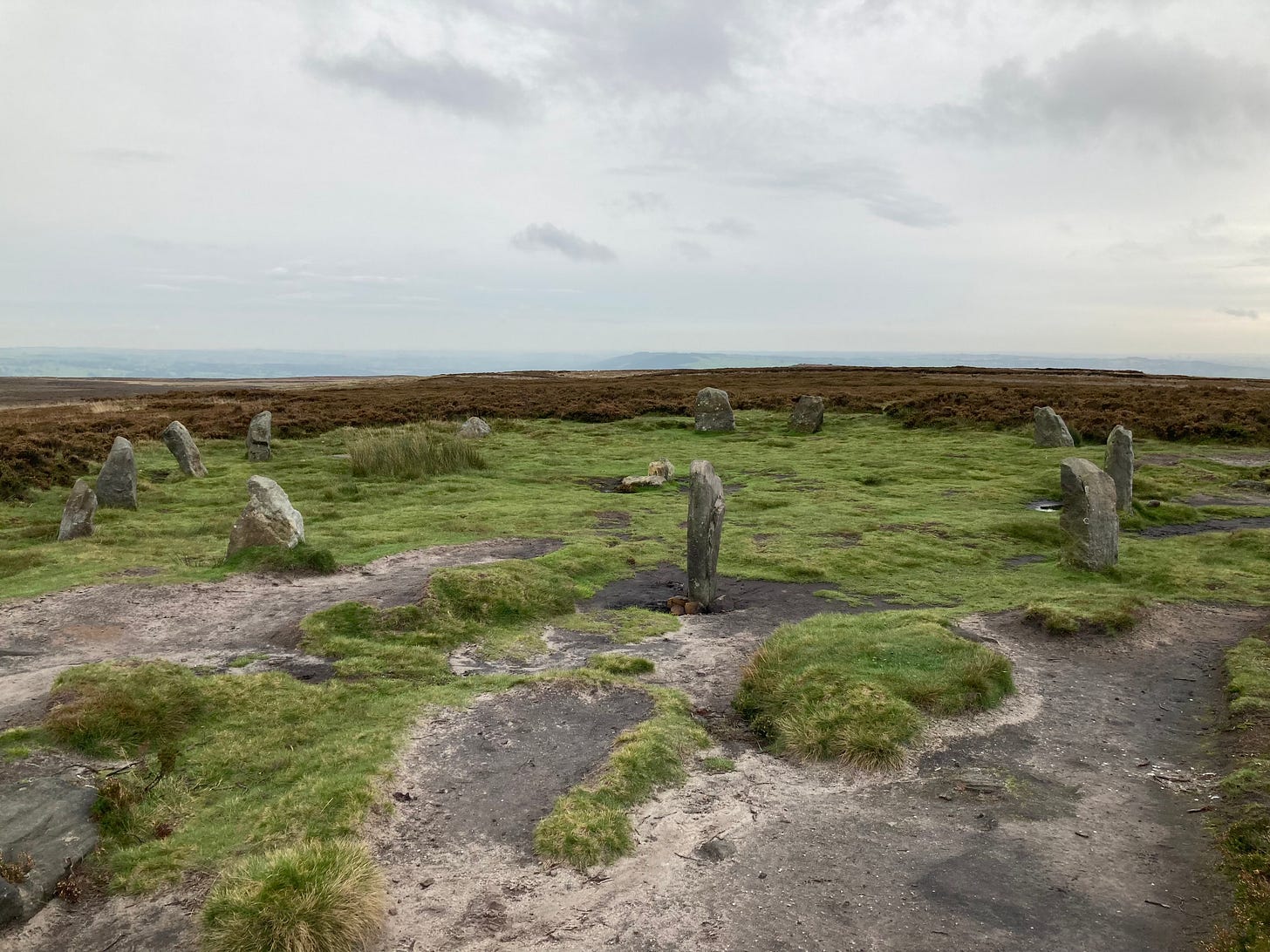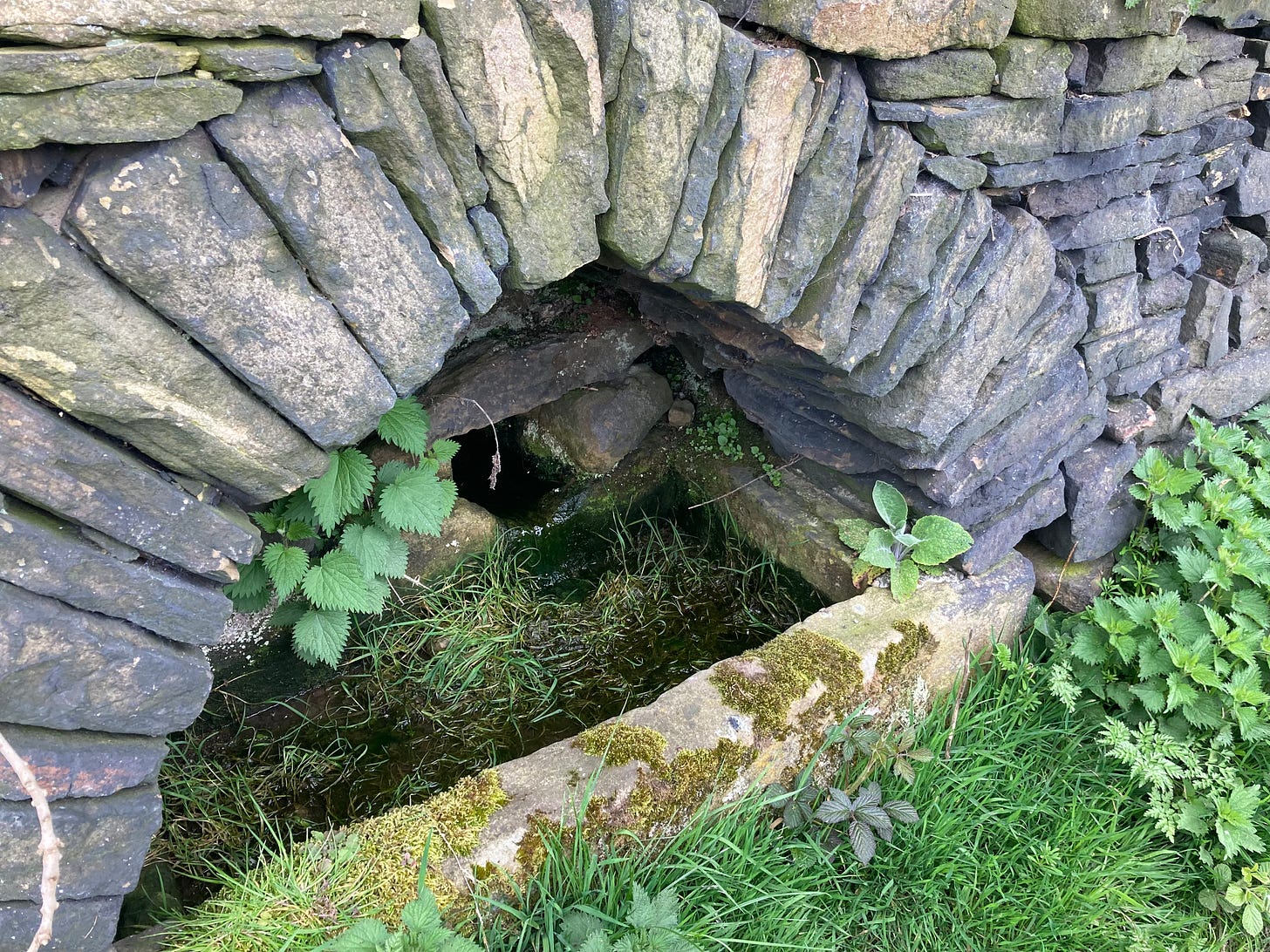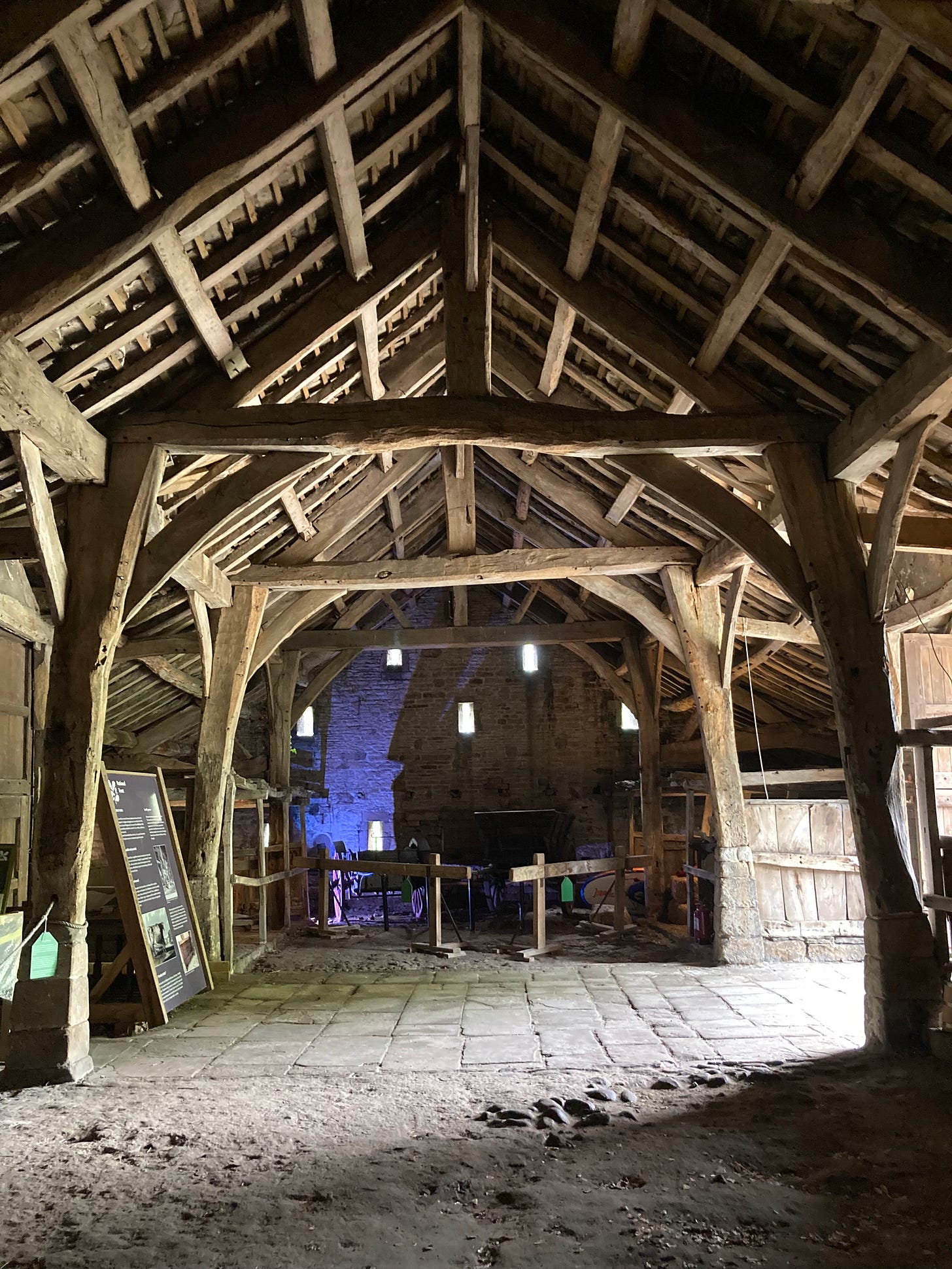Apparently I’m feeling a bit sentimental this week. Some of it is PMT. A lot of it is that there is a lot going on, including the fact that it is now a month before I officially move to India for a year.
I’m unbelievably excited and will definitely be writing more here about the courses I’ll be teaching. Preparing for them is already so enriching. It’s also a bit daunting and I am going to miss my partner and family enormously. (I will miss my friends as well, but we’re a pretty global bunch, so the biggest difference is going to be working out when to chat across a time zone set on the half-hour from GMT. Maths is not my talent.)
As leaving day gets closer, though, I’m also thinking about how much I’m going to miss home, and that is quite a joyful thought, as well as a sad one. Among my friends, I definitely know people who have moved around a lot more than me, but in relation to people I knew growing up, the family, friends and community who are so important in establishing our sense of normality, I’ve spent a lot of time on the move.
On my first visit to India, I came across the phrase ‘my native [optionally: place]’, and it immediately resonated. I love my native [place] (and it’s hi ho Wolverhampton!) and always will, but I haven’t lived there (except for a few months in 2013) since I left for university twenty years ago. It is homely and familiar but it isn’t home.
I spent four years each in Cambridge then Birmingham, and then nearly a year in Washington D.C., studying. They each hold a very special place in my heart, but not only did I leave, I also always knew I would. I was there for a purpose, which had a time limit on it.
Then there are the places that become part of you from the first time you arrive. For me they are, so far: Venice, Llanberis (and its unbelievably beautiful environs), Madurai, and, indeed, Hyderabad, which is an extra exciting thing about going to live there.
But I would not necessarily call any of these places home. Yet.
Arguably, this is a problem with how I (don’t) define home. The concept is notoriously slippery. What makes somewhere home? It has been grasped for in innumerable works of art, groped at by reams of scholarship, romanticised and rejected as something necessary for people to be happy or fulfilled. I’m still working out what I mean by it, but my little patch of West Yorkshire, around the town of Keighley, definitely counts.
There are lots of reasons why it feels like home, but I’m a historian and this is a history newsletter, and the past is a huge part of the picture. So this week is a fond reminiscence and a pleasant reflection on a tricky concept. What role can the past play in our sense of place and belonging?1

I am definitely moved by a sense of continuity: other people have lived in this place, and looked at this sky. As we situate ourselves horizontally as part of our families and friendships, so we can situate ourselves vertically in time, too. There are lots of stone circles in Europe called ‘the twelve apostles’ and this is one up on Ilkley Moor above Keighley. Most of them probably pre-date the twelve apostles. Their creation and then their renaming both testify to earlier generations making sense of the land around them.
By some standards, these particular standing stones aren’t even that big, but that isn’t the point. They still took planning, effort, and presumably a sense that that was worthwhile because the people who put them up expected to be able to come back again, probably quite regularly given that stone circles are likely connected with star gazing and working out the passing of time. Getting to know the places that other people, across generations, thought of as somewhere, connects me to them in some way, and makes it somewhere to me.
It took a while living around Keighley to go visiting all the places there are to see. East Riddlesden Hall is definitely one of them. As we did, though, my partner and I found ourselves learning to read the phases and the changes, to recognise the book narratives of a general past in the particular places around us. Keighley is right in the heart of wool country: that is why places like East Riddlesden Hall could exist in the pre-industrial period, but even though they are beautiful, they also testify to the fact that England up here was not as rich as either the south or the East Riding around York, which both had better land for grain. Halls and castles up here are smaller, but just in walking distance from Keighley there are lots of them - the homes of people who could become wealthy sending wool to the coast, and who, at least around the 1650s, probably all employed the same stone masons and builders to make their barns and houses, using the same local stone and wood.
Spotting the similarities in design and decoration, experiencing the distances between places, which must have been more isolated when they were built, but which are still only a couple of hours’ walk apart, feeling the steepness of the landscape and the rockiness of the ground, which made it better for sheep than wheat, makes it easier to imagine the social world of this place: hardy, famous in Britain for not valuing too many airs and graces, quiet, perhaps a little reserved. People are not made by their landscapes and people do not create their landscapes. We are always creating each other - ourselves and the world around us.
Places like East Riddlesden Hall remind me of that intimacy, of the stone that changes texture and colour as we travel north from visiting family, until it feels like home because it is the same stone as our walls and those of the buildings all around. It reminds me of the character of a place where old houses sit low and heavy against a biting wind and a tithe barn like this would have brought a community together each year, sometimes thriving and sometimes struggling to survive.

If wool made the area around Keighley a richer place from the late Middle Ages than it had been in earlier centuries, cotton brought another transformation from the eighteenth century. Railways and canals eased the movement of cloth out to Liverpool and then the world, or south to London. The Keighley and Worth Valley Railway is something I will miss greatly while I’m away. If part of feeling at home somewhere is being familiar with it, then pottering up and down the Worth Valley, watching the seasons change and listening to the whistle of a steam engine, will certainly build up that familiarity.
On either side of the valley, villages dot the hills, usually straggling downwards, so that most of the houses sit up on the hillside and some reach down to connect to the railway station. Their windows are bigger than the narrow, guarded mullions of places like East Riddlesden. The old windows were designed to keep as much cold out as possible while giving enough light to function. These new windows, climbing up the valley, were designed to let in as much light as possible, so that the families who worked upstairs and lived downstairs, could see to weave first wool, then cotton.
Most of these villages will have a mill or two, as well, documenting the shift from cottage industrialisation to large workforces, long hours and loud machines. And they almost all have at least one non-conformist church - Baptists, Methodists, Wesleyans, Presbyterians - which came in lockstep with the factories. The non-conformist churches offered solace but also anger and organisation. They were often the place where workers’ movements began and demands were framed for better conditions for the people who made the wealth that built the towering chimneys and the railways.

If some of feeling at home, for me, is being able to read the ‘big picture’ in the world around me, some of it is also having maps in my mind that are small and personal. Home is knowing where I am and where a particular path leads and the visible traces of the past also become valuable landmarks. In lockdown, we did a particular walk, along a stream through a small wood, quite a few times. This beautiful little trough became one of the landmarks as I slowly laid out the route in a brain that is much better at history than geography. Gradually, recognising it when I saw it, then knowing when to expect it on a walk, then making it a landmark I could link to others, now knowing where it is on a map that includes all of the space around it - every road, the line of the stream, the best pubs, the field with the friendly horse, was a huge part of the process of feeling at home.
It is testament to the ways these routes change, though. Now this is one of our favourite paths because it is always quiet. Often you can see roe deer and rabbits. This trough is a reminder that once, even if it wasn’t busy, it was important enough for somebody to provide infrastructure for travellers and their horses. In a car, it is easier to take straight roads along the high ridges of hills, then turn steeply down into the little villages below. For a horse and cart, longer, shallower slopes, and the bottoms of valleys, closer to the rivers, were more practical.
We can often tend to romanticise and to demonise the past: it was slower, quieter, people were more connected; it was harder, poorer, people died younger. Details, like a trough in a wall, help me to focus away from either and to imagine, instead, simply the differences and the similarities of other lives and other times: their practicalities and sensations, what people might have known to make sense of this place, the names they gave to tracks and hills.
Perhaps more than anything, my current sense of home, as I prepare to leave it for a while, is rooted in the dialogue between place and memory. Some places, which are not home, are pinpricks of light in my memory. They help me keep track of the timeline of my life: that thing happened in that year because I remember that I was in that place, and I was only there once. Home, and all of the places which have felt a bit like home, are more like islands - distinct from each other, but large enough to get lost on. That thing happened in that phase of my life because I was living there, but it can also float freely in the memory of that place, of everyday days, of habits and routines.
Home is where I work, most of the time, where our cats resent the slightest change to their daily rituals (many of which are about trying to stop us from working), where I know every route and walk but can’t necessarily remember when it was we saw that deer or the first time I noticed that an inconspicuous stream was actually once a mill race, now overgrown so that its unnatural shapes and the old sluice gates are easy to miss. Home is where personal time meshes with historical time.
It was also a great pleasure a few days ago to read a research proposal by somebody I was privileged to teach at Birkbeck, who is now hoping to study exactly these questions in far greater depth. The document isn’t in the public domain, so I can’t cite it, but I hope to see future work from the project that I can and in the meantime, that work has definitely shaped my ruminations, and distracted me from the vague anxiety of roof repairs in a week of thunderstorms. Thank you, you who know who you are!







Well, that was a delightful read, in so many ways. 😁